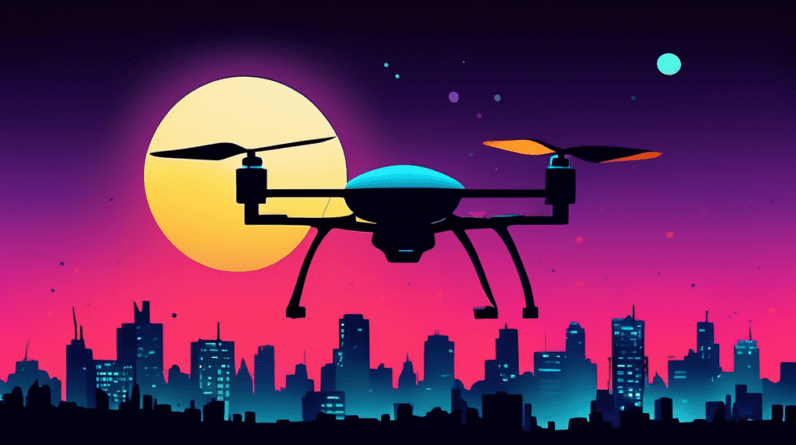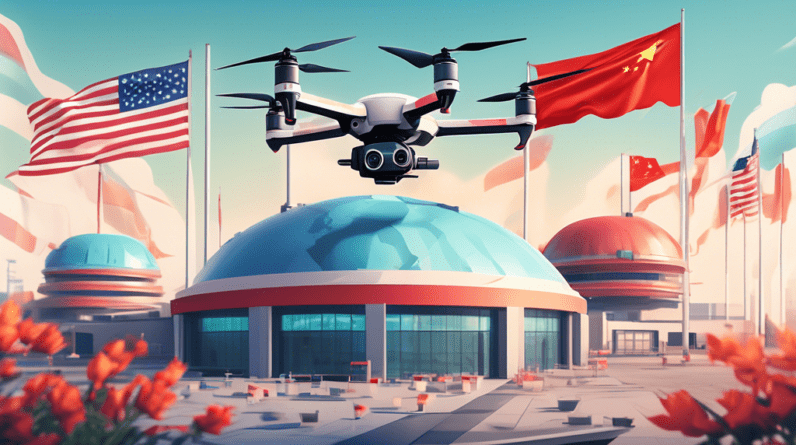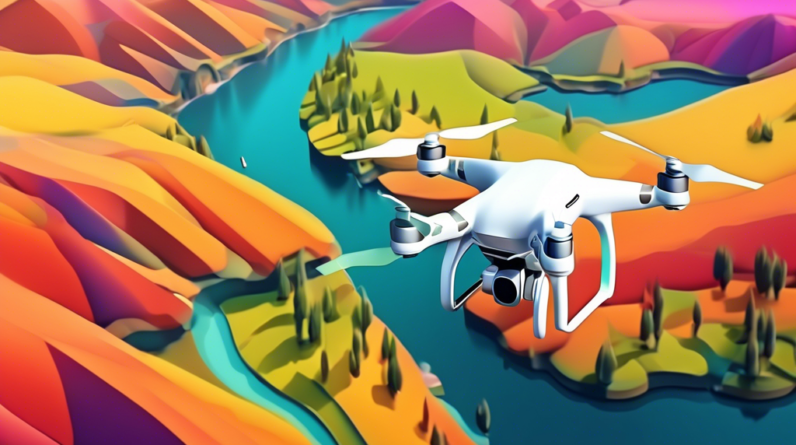How Drones Work: A Comprehensive Guide to Unmanned Flight
Drones, also known as unmanned aerial vehicles (UAVs), have become increasingly popular in recent years, revolutionizing various industries and captivating hobbyists worldwide. But have you ever wondered how these fascinating machines actually work? This comprehensive guide will delve into the intricacies of drone technology, exploring the key components and principles that enable them to take flight and perform complex tasks.
The Anatomy of a Drone
To understand how drones work, it’s essential to familiarize ourselves with their basic structure. While designs vary depending on the model and purpose, most drones share common components:
- Frame: The skeleton of the drone, typically made of lightweight and durable materials like carbon fiber or plastic, provides structural support for other components.
- Motors: Electric motors, often brushless for efficiency and longevity, power the propellers and generate the thrust necessary for lift and movement.
- Propellers: These airfoil-shaped blades convert the rotational energy from the motors into thrust, enabling vertical and horizontal movement.
- Electronic Speed Controllers (ESCs): ESCs regulate the power delivered to the motors, controlling the speed and direction of the propellers.
- Flight Controller: The brain of the drone, the flight controller is a small computer that processes sensor data and sends commands to the motors and other components to maintain stability and execute flight maneuvers.
- Sensors: Various sensors, such as gyroscopes, accelerometers, and barometers, provide the flight controller with essential data about the drone’s orientation, altitude, and movement.
- GPS Module: A Global Positioning System (GPS) module allows the drone to determine its location and navigate autonomously or with assistance from the pilot.
- Battery: Lithium-polymer (LiPo) batteries are commonly used to power drones, providing the necessary electrical energy for flight.
- Radio Transmitter and Receiver: These components facilitate communication between the drone and the pilot’s remote controller, allowing for control over flight parameters and payload functions.
Taking Flight: Principles of Drone Operation
The magic of drone flight lies in the interplay of various forces and principles:
- Lift: Drones generate lift through the Bernoulli principle. As the propellers spin, they create a pressure difference above and below the blades, resulting in an upward force that overcomes gravity.
- Thrust: The propellers also produce thrust, pushing the drone forward or backward depending on their rotation direction and angle.
- Drag: Air resistance opposes the drone’s motion, and its design aims to minimize drag for efficient flight.
- Gravity: The constant force of gravity pulls the drone downward, and the lift generated must exceed gravity to maintain altitude.
The flight controller plays a crucial role in maintaining stability and control. It continuously monitors sensor data and adjusts motor speeds to counteract external forces and pilot inputs, ensuring smooth and precise flight maneuvers.
Types of Drone Control
Drones offer various control options, depending on the model and its intended use:
- Remote Control: Most drones are controlled using a dedicated remote controller that communicates with the drone via radio waves. The pilot manipulates joysticks and buttons on the controller to adjust flight parameters and activate features.
- Autonomous Flight: Advanced drones can perform pre-programmed flight paths or autonomous missions using GPS and onboard sensors. These drones can follow waypoints, maintain altitude, avoid obstacles, and even return to their starting point automatically.
- Mobile App Control: Some drones can be controlled using smartphone or tablet apps via Wi-Fi or Bluetooth connections. These apps provide a user-friendly interface for basic flight controls and camera functions.
Applications of Drone Technology
The versatility of drones has led to their adoption in numerous industries and applications:
- Aerial Photography and Videography: Drones provide stunning aerial perspectives for capturing photos and videos, revolutionizing filmmaking, real estate marketing, and event coverage.
- Inspection and Monitoring: Drones can inspect infrastructure, such as bridges, power lines, and pipelines, reducing risks and costs compared to traditional methods.
- Agriculture: Drones assist in crop monitoring, spraying, and surveying, improving efficiency and yield for farmers.
- Search and Rescue: Drones with thermal imaging cameras and searchlights aid in locating missing persons and providing situational awareness during emergencies.
- Delivery Services: Companies are exploring the use of drones for delivering packages, especially in remote or hard-to-reach areas.
- Recreational Use: Drone racing and aerial photography have become popular hobbies, offering exciting and creative outlets for enthusiasts.






